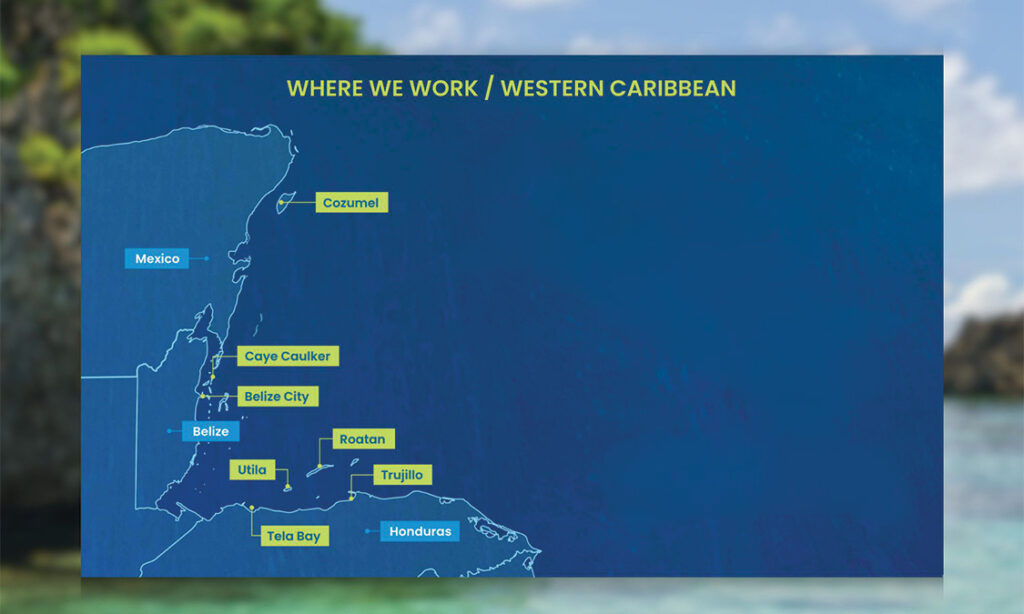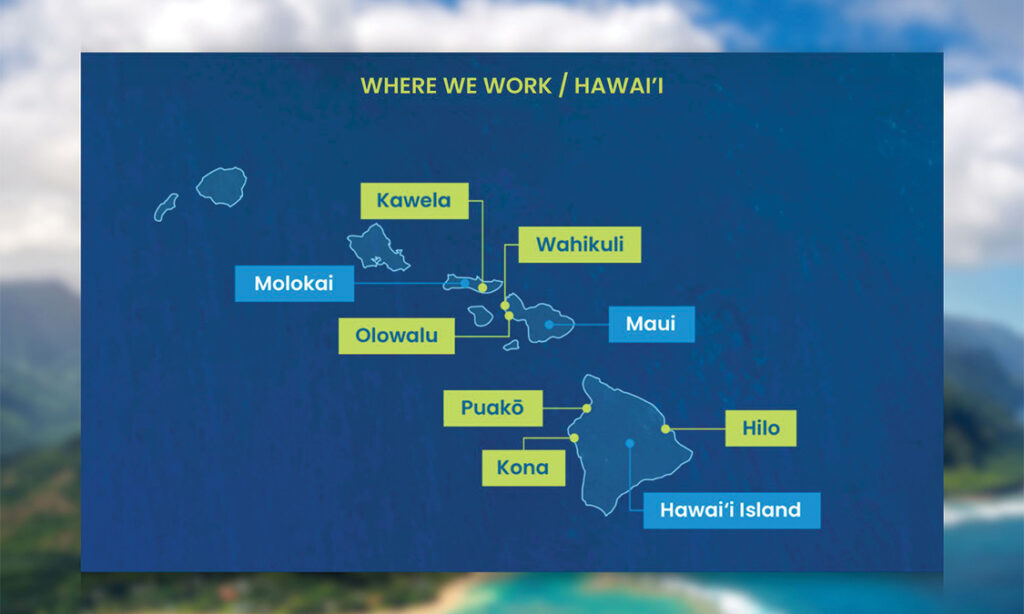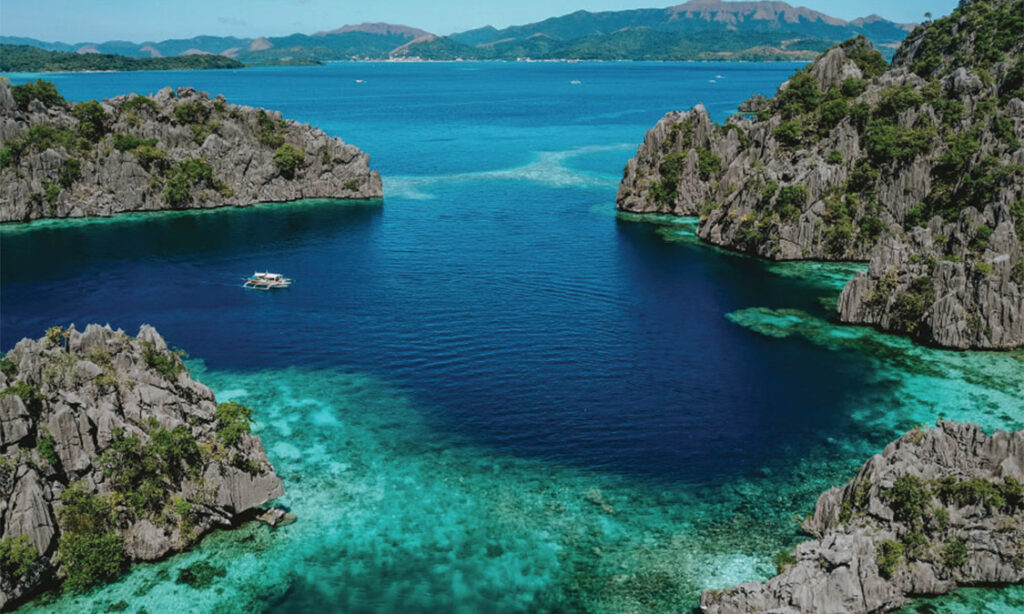How do we decide where to focus our efforts in saving coral reefs? It’s a question we get asked a lot, and the answer is both strategic and deeply rooted in our mission.
So let’s get into it!
We consider three main factors when choosing where to work – climate adaptation needs, local leadership and partnerships, and the resource needs of communities.
1. Climate Adaptation Needs
First and foremost, we prioritize coral reef networks that need protection to facilitate climate adaptation. Coral reefs are more than just beautiful underwater landscapes; they are interconnected ecosystems that rely on ocean currents to transport coral larvae from one reef to another. This natural process creates resilient networks capable of adapting to climate change.
Take the islands of Maui Nui (Maui, Lanai, and Molokai) in Hawaii, for example. These islands are connected by ocean currents that allow coral, fish, and invertebrate larvae to travel between them, seeding neighboring reefs. This interconnectedness is the backbone of our strategy, helping us design marine protected areas that support each other and enhance overall coral reef conservation.
2. Local Leadership and Partnerships
Our second consideration is the presence of local leaders who are willing to partner with us. Collaboration is at the heart of everything we do. We work with community leaders, non-profits, and local governments who understand the importance of coral reef conservation and are eager to implement sustainable practices. These partnerships are essential for promoting local stewardship and ensuring the long-term success of our conservation efforts.
When communities invite us to the table and seek our expertise, it creates a powerful synergy. Together, we can develop and implement strategies that protect marine environments while benefiting local populations. It’s about working hand-in-hand with those who know and love their reefs best, fostering a sense of ownership and pride in conservation efforts.

3. Resource Needs of Communities
Finally, we focus on areas where coral reefs are in urgent need of intervention and the communities lack the necessary resources to protect them. Many regions around the world struggle with limited infrastructure and funding to effectively manage their marine ecosystems. By concentrating our efforts on these under-resourced areas, we provide the crucial support needed to restore and preserve vulnerable coral reefs.
This commitment to working in developing countries highlights our dedication to addressing the most pressing challenges in coral reef conservation. It’s about leveling the playing field and ensuring that even the most threatened reefs have a fighting chance.
So, Where Do We Work?
“Where do you work?” is a multifaceted question for our organization because our impact spans local, regional, and global scales. Here’s a closer look at the different levels of our involvement:
Our Field Sites
Western Caribbean
- Countries: Mexico, Belize, Guatemala, and Honduras
- Examples of Reefs We Work In: Palancar Reef (Cozumel), Cayman Crown (Belize), El Parque Nacional Marino Islas de la Bahía (Honduras), Cordelia Banks (Honduras)
In the Western Caribbean, we have staff on the ground working directly on conservation initiatives. For example, the Palancar Reef in Cozumel and the Cordelia Banks in Honduras are just two critical sites where we focus our efforts. These reefs are vital to the local marine ecosystem and economy, and our work helps ensure their health and resilience.

Hawaiian Islands
- Islands: Maui, Molokai, Oahu, Hawaii Island
- Examples of Reefs We Work In: Olowalu (Maui), South Molokai
In Hawaii, our team works on islands like Maui and Molokai, where reefs like Olowalu and South Molokai are key to the region’s biodiversity and coastal protection. These reefs face numerous threats, from climate change to pollution, and our initiatives aim to mitigate these challenges and promote sustainable practices.

Coral Triangle
- Countries: Indonesia and the Philippines
The Coral Triangle, encompassing Indonesia and the Philippines, is another crucial area where we focus our conservation efforts. Known for its incredible biodiversity, this region’s reefs are essential for marine life and local communities. Our work here helps protect these vibrant ecosystems and supports the livelihoods of those who depend on them.

Regional and Global Impact
Beyond our field sites, we extend our influence on a regional and global scale. We collaborate with key decision-makers, scientists, and policymakers to amplify our impact. This broader approach allows us to support coral reef conservation efforts worldwide, using our scientific expertise and strategic partnerships to drive meaningful change.
Conclusion
At CORAL, our mission is to save coral reefs by focusing on climate adaptation needs, collaborating with local leaders, and supporting under-resourced communities. By strategically choosing where to work, we ensure that our efforts have a lasting and meaningful impact on coral reef conservation. Protecting these vital ecosystems is not just an environmental necessity but a legacy we owe to future generations. Stay tuned for more insights and updates on our conservation efforts, and join us in making a difference.

